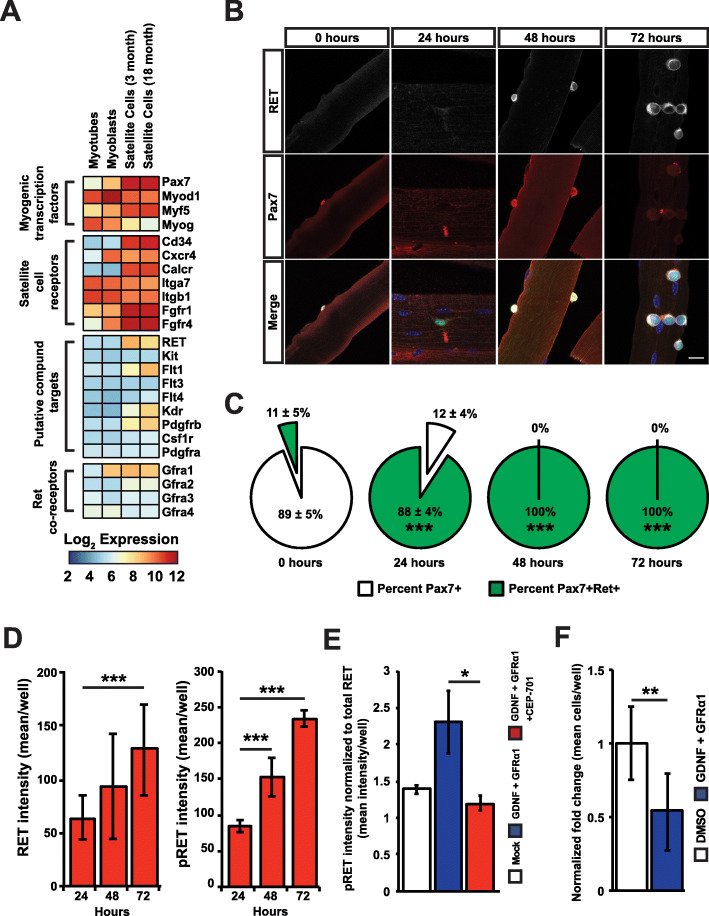Fig. 5.
RET is a novel satellite cell receptor inhibited by CEP-701. a Fold changes based on log2-transformed RMA values from satellite cells of 3-month, 18-month, cultured myoblast and myotubes used to generate global ratio heat maps. Red indicates genes that increased in expression, and blue indicates a decrease in expression. b Representative immunofluorescent images of satellite cells on single muscle fibers isolated from the EDL muscle of adult (2–4 months) Tg:Pax7nGFP mice. Time course conducted at 0, 24, 48, and 72 h of culture in vitro. Cultures were stained with antibodies against RET (white) and Pax7 (red). The nuclei were counterstained with Hoechst (blue). Satellite cells also express GFP under the control of the Pax7 promoter (green). Scale bar indicates 20 μm. c Percentage of adult satellite cells (Pax7+) expressing RET protein (Pax7+/RET+) at 0, 24, 48, and 72 h of single EDL muscle fiber culture. Data represent mean ± SD from 3 independent experiments. Statistical significance was evaluated by an unpaired two-tailed t test assuming unequal variance relative to (Pax7+/RET+) 0 h (***p < 0.001). d Calculation of RET and phospho-RET intensity on primary CXCR4+/ITGβ1+ satellite cells isolated by FACS and cultured for 24, 48, and 72 h (**p < 0.01; ***p < 0.001). e Phospho-RET intensity normalized to total RET levels in primary CXCR4+/ITGβ1+ satellite cells isolated by FACS and stimulated with GDNF and GFRα1 either in the presence or absence of 50 nM of CEP-701. *p < 0.05. f Normalized fold change in the average number of satellite cells per well following culture in vitro in the presence of 500 ng/mL GDNF and 500 ng/mL GFRα1. n = 8. **p < 0.01. Cells were treated as in Fig. 2a to match the conditions to CEP-701-treated cells

